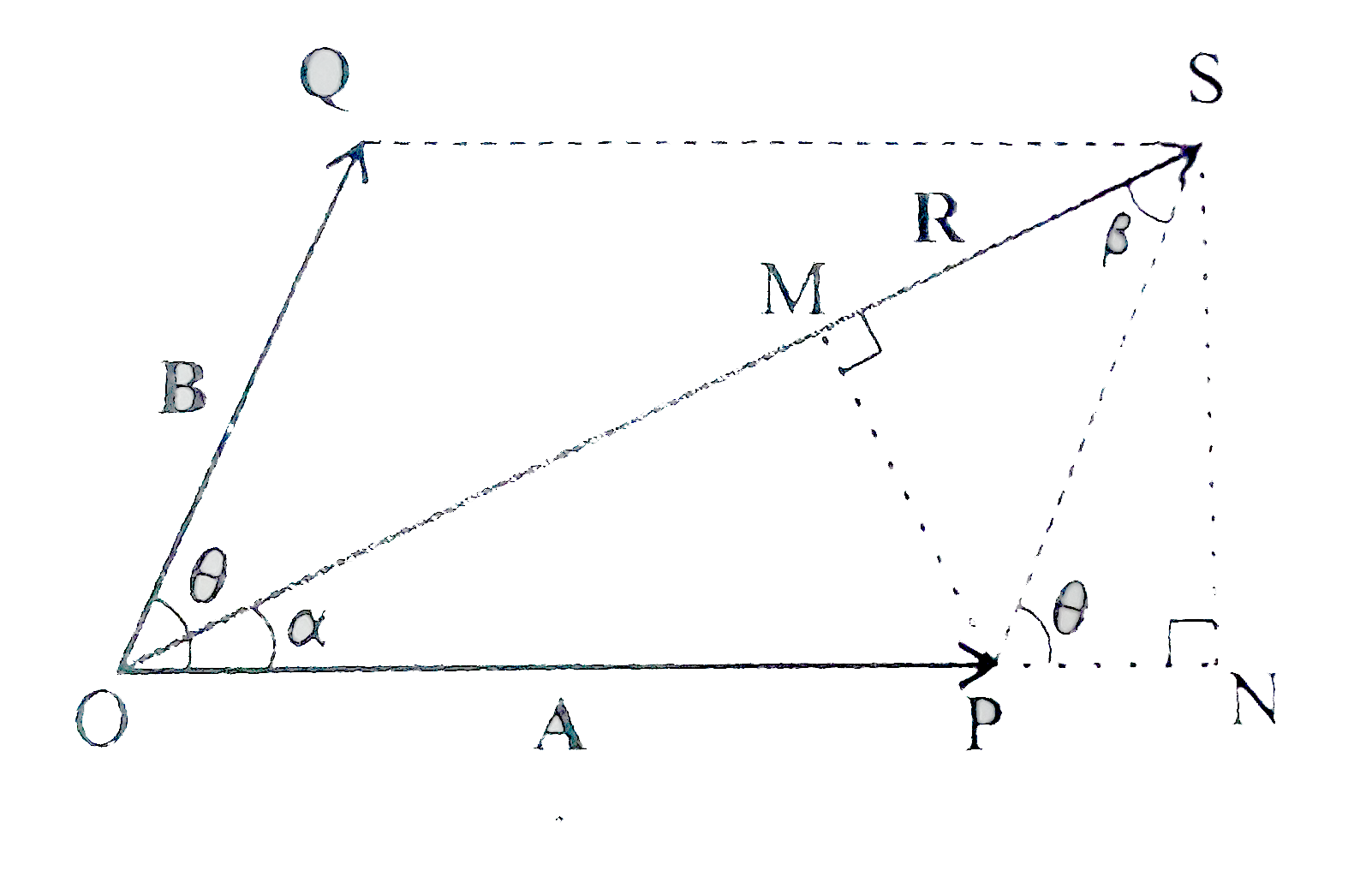Find the magnitude, direction and position of the resultant, if the forces in the above problem are unlike ?

The magnitude of the resultant is
R = A - B (greater force - smaller force)
= 15 N - 5 N = 10 N
R = 10 N
Its direction is same as that of the greater force, i.e., A.
Its position is outside MN on the side of A at point 'O' at a distance 'x' from A, such that
A×MO=B×NO
15×x=5×(4+x)
15x=20+5x
∴x=2m
Topper's Solved these Questions
- SIMPLE MACHINESBook:PEARSON IIT JEE FOUNDATIONChapter:SIMPLE MACHINESExercise:Very Short Answer Type Questions
Explore 30 Videos
- SIMPLE MACHINESBook:PEARSON IIT JEE FOUNDATIONChapter:SIMPLE MACHINESExercise:Short Answer Type Questions
Explore 13 Videos
- MODERN PHYSICSBook:PEARSON IIT JEE FOUNDATIONChapter:MODERN PHYSICSExercise:Level 3
Explore 5 Videos
- WAVES MOTION AND SOUND Book:PEARSON IIT JEE FOUNDATIONChapter:WAVES MOTION AND SOUND Exercise:Level 3
Explore 10 Videos
Similar Questions
Three force are applied to a square plate as shown in the figure. Find the magnitude, direction and point of application of the resultant force if this point is taken on the side BC.

View SolutionFind the magnitude and direction of the resultant of two vectors A and B in the terms of their magnitudes and angle θ between them.

View Solution
Knowledge Check
In the above problem the resultant force on the body is
A56.6 NB66.6 NC76.6 ND86.6 NIn the above problem, direction of friction force is
Atowards left if F1 is appliedBtowards left if F2 is appliedCtowards right if F3 is appliedDmay be right or left or friction may be zero if F4 is appliedThe sum of the magnitudes of two forces acting at a point is 18 and the magnitude of their resultant is 12. If the resultant is at 90∘ with the force of smaller magnitude, then their magnitudes are
A3, 15B4, 14C5, 13D6,12
Find the magnitude and direction of the resultant of the velocities of 100ms−1 and 60ms−1 inclined to each other at angle of 60∘.
View SolutionA uniform metallic rod PQ of length 2 m is acted upon by two forces A and B along the directions as shown in the figure. Find the magnitude and position of the resultant normal force that acts on the rod.

View SolutionCalculate the magnitude and the direction of the resultant force acting on an object shown in the picture.

View SolutionThe sum of the magnitudes of two forces acting at a point is 18 and the magnitude of their resultant is 12. If the resultant is at 90∘ with the force of smaller magnitude, What are the magnitudes of forces?
View SolutionA uniform metallic rod AB of length 1.4 m is lifted by two forces P and Q acting along the directions as shown in the figure. If the magnitudes of P and Q are 20 N and 50 N, respectively, find the magnitude and the position of the resultant normal force that acts on the rod.

View Solution